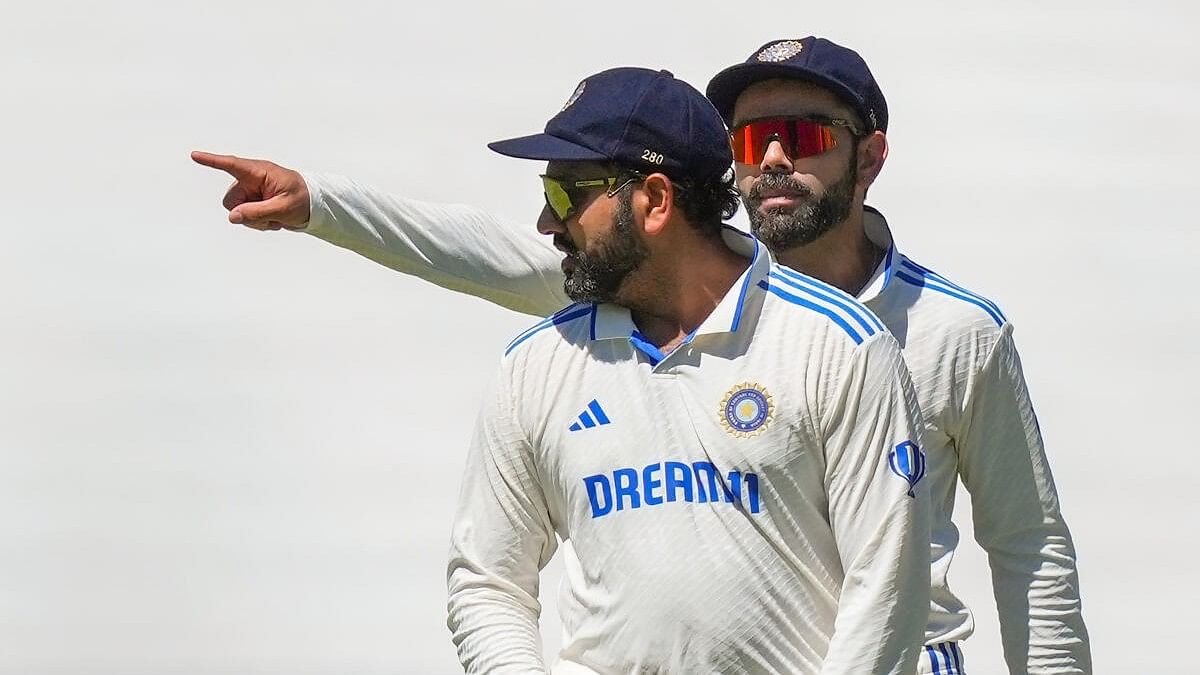
Rohit Sharma (foreground) and Virat Kohli, two great servants of Indian cricket, don't have many years left in them and blooding right replacement must start soon.
Credit: PTI File Photo
Newlands: It might not seem like it, and it certainly isn’t the balm for the loss in the World Cup, but this is the most successful India has been on a trip to South Africa.
Since coming to the Rainbow Nation a month ago, India have drawn a three-match Twenty20 International series 1-0, won the three-match One-Day International series 2-1 and drawn the two-match Test series 1-1.
For a side which has only once before drawn a Test series here and has only once won an ODI series prior to this one, that’s an admirable feat. In fact, the year they won their maiden ODI series (5-1) here in 2017-2018, they also won the T20I series 2-1.
That was also the first instance of a three-match T20I series between the sides. Up until that point, the shortest format was observed in the one-off sense.
Anyway. Here we are. India have shown why they are the undebatable superpower in cricket.
That sentence would have read: ‘…shown why they are the top-ranked side in world cricket across all formats’, but Australia went past them in Tests following their victory over Pakistan.
But International Cricket Council’s rankings are not a particularly accurate metric of what comprises a good side. A series such as this, however, is very reflective of the Indian team’s recent body of work, and Rohit Sharma should be proud.
This level of success, consistency and acumen in the craft took years to achieve and was built on the shoulders of those preceding this generation.
A meticulous grassroot system, monetary abundance, change of tact concerning pitches in India, the Indian Premier League and so on are all naturally the reasons for such efficiency, but no one reckoned it would go on for so long.
Yes, their numbers when it comes to so-called SENA countries are still not very good, but do you recall their iconic victory at the Gabba in 2020-2021? Remember that iconic 2-2 draw against England in 2021-2022? And now this.
Well, 2022 and 2023 wasn't particularly good for them because they have lost all of their games since then in two of the SENA countries, starting with the seven-wicket loss against South Africa in Johannesburg.
After that, they lost to the Proteas once again in Cape Town before losing to England at Edgbaston and then going down to Australia in the World Test Championship final at Lord's, and then to South Africa again last week in Centurion.
But they couldn’t have hoped for a better start to a new year after defeating South Africa by seven wickets at Newlands on Thursday. That was a monumental victory on a vicious pitch.
That said, what does the future hold?
India seem bolstered for generations to come when it comes to limited-overs cricket. It’s an enviable conveyor belt of talent at this point, but there are some concerns when it comes to Tests.
An entire generation of players will be on their way out of the side sooner than later, meaning India will need to buttress their exits. The likes of Rohit Sharma and Virat Kohli can stick around for a while, but it won’t be for long. The same when it comes to Ravindra Jadeja, R Ashwin, Mohammed Shami, Jasprit Bumrah and others.
India needs to identify and help mature youngsters, preferably those in their early 20s. That’s why a tour of this kind is immeasurable and useful for the likes of Yashavi Jaiswal, Shubman Gill and Shreyas Iyer.
They are the future, but they will need to learn how to be it too. That’s where Jaiswal and Gill have shown that they can adapt and get by.
Shreyas, however, needs a dramatic revamp of the methods he uses to fetch runs. His current technique might work in the sub-continent because there isn’t much bounce and he happens to be good at facing spinners, but in SENA countries, his flay-and-hope style won’t work.
Some of that concern should extend to the bowling unit too because the odds of India having pacers of this calibre all from nearly the same generation is slim to none. The same for the quality Jadeja and Ashwin bring.
The Renaissance period might be coming to an end, but that doesn’t mean the empire is falling. It will evolve, we only need to wait and see how.